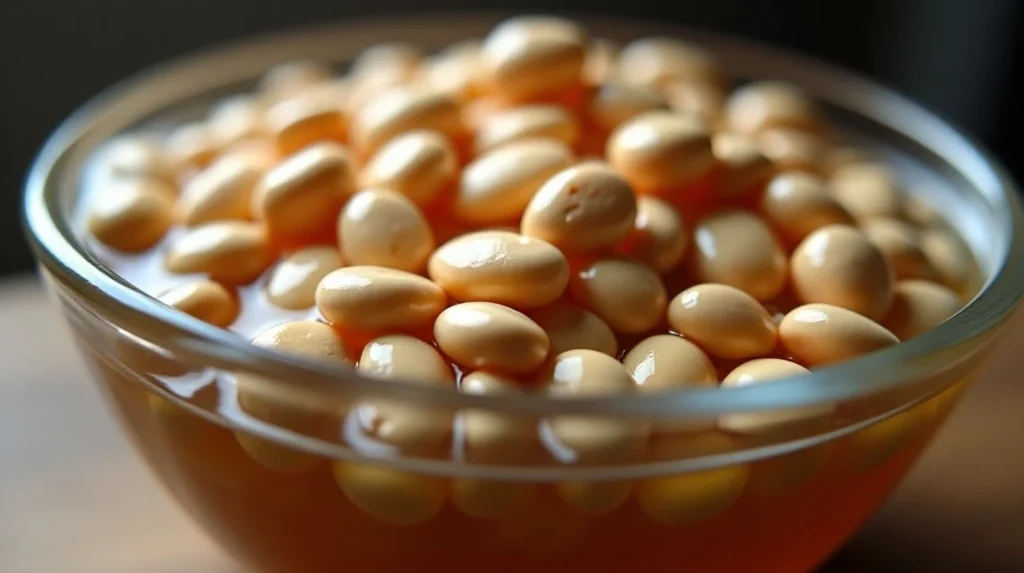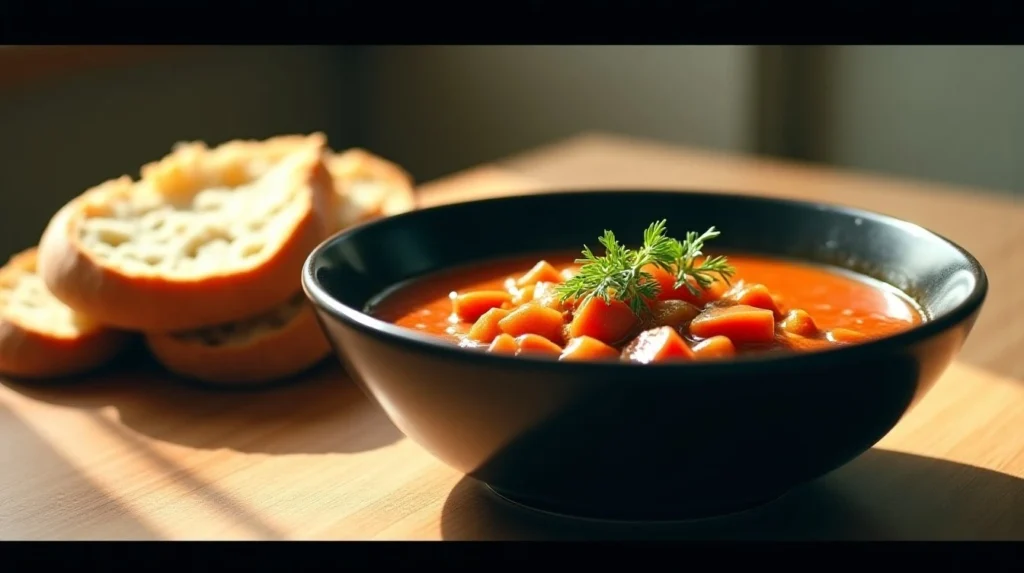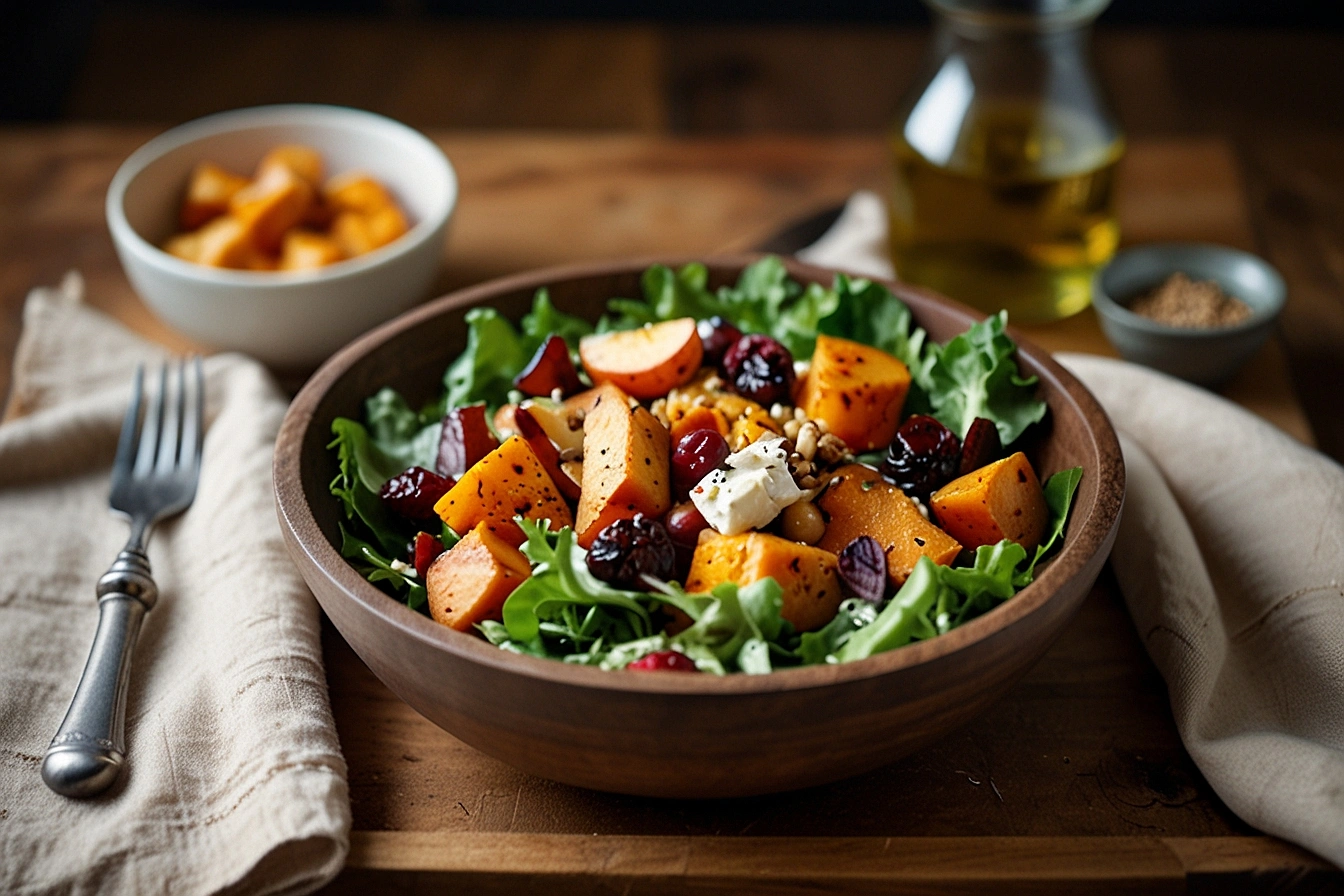Introduction to Turkey’s Beloved Bean Stew
Have you ever tasted a dish so comforting it feels like a warm hug? That’s exactly what kuru fasulye offers – Turkey’s beloved white bean stew that combines simple ingredients into something truly magical. This classic Turkish dish has been warming hearts and filling stomachs for generations, and today I’m sharing my favorite recipe that strikes the perfect balance between authentic flavor and practical preparation.
As a staple in Turkish cuisine, kuru fasulye (which literally translates to “dry beans”) transforms humble white beans into a rich, tomato-based stew that’s both hearty and surprisingly easy to make. Furthermore, this versatile dish works beautifully as either a main course or a side dish, making it perfect for family dinners or casual entertaining.
Let’s dive into this delicious world of Turkish bean stew and discover why kuru fasulye deserves a place in your regular cooking rotation!
The Cultural Significance of Kuru Fasulye
Before we start cooking, it’s worth understanding why kuru fasulye holds such a special place in Turkish culture. First of all, this humble bean stew is considered one of Turkey’s national dishes, served everywhere from home kitchens to high-end restaurants and even government cafeterias.
Additionally, kuru fasulye represents the practical yet flavorful approach to Turkish cooking – transforming accessible ingredients into something extraordinary through slow cooking and careful seasoning. The dish also showcases how Turkish cuisine masterfully balances vegetables, legumes, and meat (though the meat is often optional).
Many Turks will tell you that the best kuru fasulye can be found in Süleymaniye, a historic district in Istanbul where the dish has been perfected over centuries. However, you don’t need to travel to Turkey to enjoy this delicious stew – our recipe brings those authentic flavors right to your kitchen!
Ingredients You’ll Need
The beauty of kuru fasulye lies in its straightforward ingredients list. Here’s what you’ll need to make this delicious Turkish bean stew:
- 2 cups dried white beans (navy or cannellini beans work well)
- 1 large onion, finely diced
- 3-4 cloves garlic, minced
- 2 tablespoons tomato paste
- 1 large tomato, diced (or 1 can diced tomatoes)
- 1 tablespoon paprika (sweet or hot, depending on preference)
- 2 tablespoons olive oil
- 2 bay leaves
- 1 teaspoon dried oregano
- Salt and pepper to taste
- 4-5 cups water or vegetable broth
- Optional: 200g beef or lamb chunks (traditionally pastırma or sucuk sausage)
- Fresh parsley for garnish

Preparation Method
Now let’s transform these simple ingredients into a delicious pot of kuru fasulye:
1. Soak the beans: First, place your dried white beans in a large bowl and cover with plenty of cold water. Let them soak overnight or for at least 8 hours. Alternatively, you can use the quick soak method by bringing the beans to a boil for 2 minutes, then removing from heat and letting them sit covered for 1 hour.

2. Prepare the base: After draining and rinsing your soaked beans, heat olive oil in a large pot over medium heat. Add the diced onions and sauté until translucent, about 5 minutes. Then add the minced garlic and cook for another minute until fragrant.

3. Build the flavors: Next, stir in the tomato paste and cook for 2 minutes to caramelize slightly. If you’re using meat, add it now and brown for a few minutes. Subsequently, add the diced tomatoes, paprika, bay leaves, and oregano, stirring to combine all ingredients well.

4. Cook the stew: Add the soaked and drained beans to the pot along with water or broth. The liquid should cover the beans by about an inch. Bring to a boil, then reduce heat to low, cover, and simmer for 1-1.5 hours, or until the beans are tender and the stew has thickened.

5. Season and serve: Once the beans are fully cooked, taste and adjust seasoning with salt and pepper. Remove the bay leaves before serving. Finally, garnish with chopped fresh parsley.

Tips for Perfect Kuru Fasulye
To elevate your kuru fasulye to the next level, consider these helpful tips:
- Bean selection matters: While any white bean will work, Turkish white beans (dermason) are ideal if you can find them. Otherwise, navy beans or cannellini beans make excellent substitutes.
- Patience pays off: The longer you simmer kuru fasulye, the more the flavors develop. Therefore, don’t rush this process – a slow simmer creates the best result.
- Adjust the consistency: Traditional kuru fasulye can range from soupy to thick. You can adjust by adding more liquid for a soupier version or simmering uncovered to thicken.
- Make it ahead: Like many stews, kuru fasulye often tastes even better the next day as the flavors continue to develop overnight.
- Vegetarian variation: Simply omit the meat for a delicious vegetarian version that’s just as satisfying and authentic.
Serving Suggestions
In Turkey, kuru fasulye is typically served with these accompaniments:
- Pilav: Turkish rice pilaf is the classic partner for kuru fasulye, providing the perfect base to soak up the flavorful sauce.
- Turşu: Pickled vegetables add a bright, tangy contrast to the rich beans.
- Fresh bread: Warm Turkish bread is essential for scooping up every last bit of sauce.
- Cacık: This cooling yogurt and cucumber side dish balances the heartiness of the beans.
Health Benefits of Kuru Fasulye
Beyond its delicious taste, kuru fasulye offers impressive nutritional benefits:
- High in protein: The combination of beans and optional meat makes this a protein-rich meal.
- Fiber-packed: White beans provide excellent dietary fiber for digestive health.
- Nutrient-dense: This dish delivers iron, magnesium, potassium, and B vitamins.
- Heart-healthy: Beans are known for their heart-protective properties, while the olive oil adds healthy fats.
- Balanced meal: When served with rice or bread, kuru fasulye creates a complete protein profile.
Making Kuru Fasulye Your Own
While traditional kuru fasulye follows certain guidelines, don’t be afraid to make this recipe your own:
- Spice it up: Add a pinch of red pepper flakes or aleppo pepper for heat.
- Add vegetables: Bell peppers, carrots, or celery can be included for extra nutrition and flavor.
- Pressure cooker version: Use a pressure cooker or Instant Pot to reduce cooking time significantly.
- Smoked flavors: Add a bit of smoked paprika or a small piece of smoked meat for depth.
- Herb variations: While parsley is traditional, you might experiment with other herbs like thyme or dill.
Conclusion
Kuru fasulye represents everything wonderful about Turkish cuisine – simple ingredients transformed through careful cooking into something truly special. This humble bean stew has fed generations of families and continues to be a beloved comfort food throughout Turkey and beyond.
By following our recipe, you’ll create a rich, hearty dish that’s perfect for family dinners, meal prep, or anytime you need a comforting bowl of goodness. Moreover, this versatile stew fits into various dietary preferences and can be adjusted to suit your taste.
So gather your ingredients, set aside some time for slow cooking, and prepare to discover why kuru fasulye has maintained its place as one of Turkey’s most cherished dishes for centuries!
Description
Have you ever tasted a dish so comforting it feels like a warm hug? That's exactly what kuru fasulye offers – Turkey's beloved white bean stew that combines simple ingredients into something truly magical. This classic Turkish dish has been warming hearts and filling stomachs for generations, and today I'm sharing my favorite recipe that strikes the perfect balance between authentic flavor and practical preparation.
As a staple in Turkish cuisine, kuru fasulye (which literally translates to "dry beans") transforms humble white beans into a rich, tomato-based stew that's both hearty and surprisingly easy to make. Furthermore, this versatile dish works beautifully as either a main course or a side dish, making it perfect for family dinners or casual entertaining.
Let's dive into this delicious world of Turkish bean stew and discover why kuru fasulye deserves a place in your regular cooking rotation!
Ingredients You'll Need
Preparation Method
-
Soak the beans:
First, place your dried white beans in a large bowl and cover with plenty of cold water. Let them soak overnight or for at least 8 hours. Alternatively, you can use the quick soak method by bringing the beans to a boil for 2 minutes, then removing from heat and letting them sit covered for 1 hour.
-
Prepare the base:
After draining and rinsing your soaked beans, heat olive oil in a large pot over medium heat. Add the diced onions and sauté until translucent, about 5 minutes. Then add the minced garlic and cook for another minute until fragrant.
-
Build the flavors:
Next, stir in the tomato paste and cook for 2 minutes to caramelize slightly. If you're using meat, add it now and brown for a few minutes. Subsequently, add the diced tomatoes, paprika, bay leaves, and oregano, stirring to combine all ingredients wel
-
Cook the stew:
Add the soaked and drained beans to the pot along with water or broth. The liquid should cover the beans by about an inch. Bring to a boil, then reduce heat to low, cover, and simmer for 1-1.5 hours, or until the beans are tender and the stew has thickened.
-
Season and serve:
Once the beans are fully cooked, taste and adjust seasoning with salt and pepper. Remove the bay leaves before serving. Finally, garnish with chopped fresh parsley.
Nutrition Facts
Servings 4
Serving Size 4
- Amount Per Serving
- Calories 272kcal
- % Daily Value *
- Total Fat 5.2g8%
- Saturated Fat 0.75g4%
- Total Carbohydrate 43.02g15%
- Dietary Fiber 10.92g44%
- Sugars 3.53g
- Protein 14.8g30%
- Vitamin C 8.48 mg
- Calcium 86.67 mg
- Iron 2.83 mg
* Percent Daily Values are based on a 2,000 calorie diet. Your daily value may be higher or lower depending on your calorie needs.
Note
- Serve with Turkish rice pilaf and fresh bread.
- Keeps well refrigerated for up to 4 days.
- Freezes beautifully for up to 3 months.
























